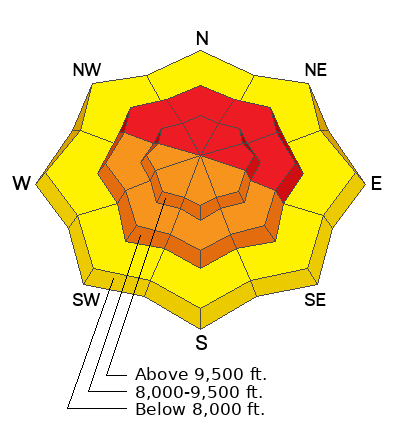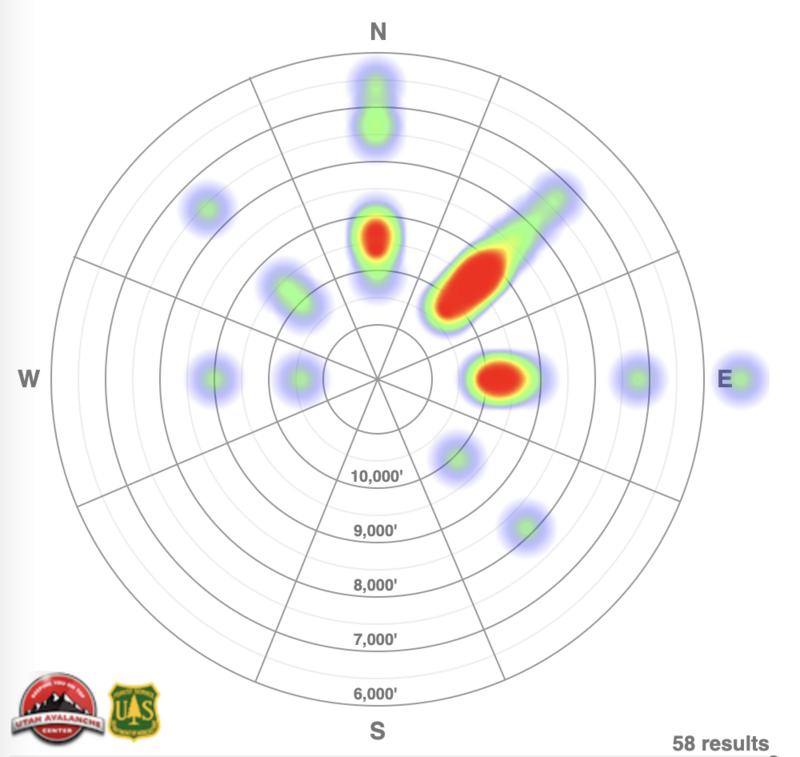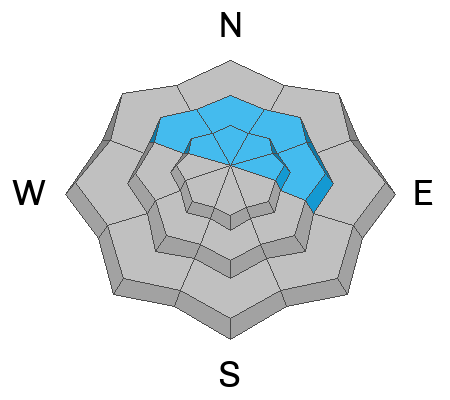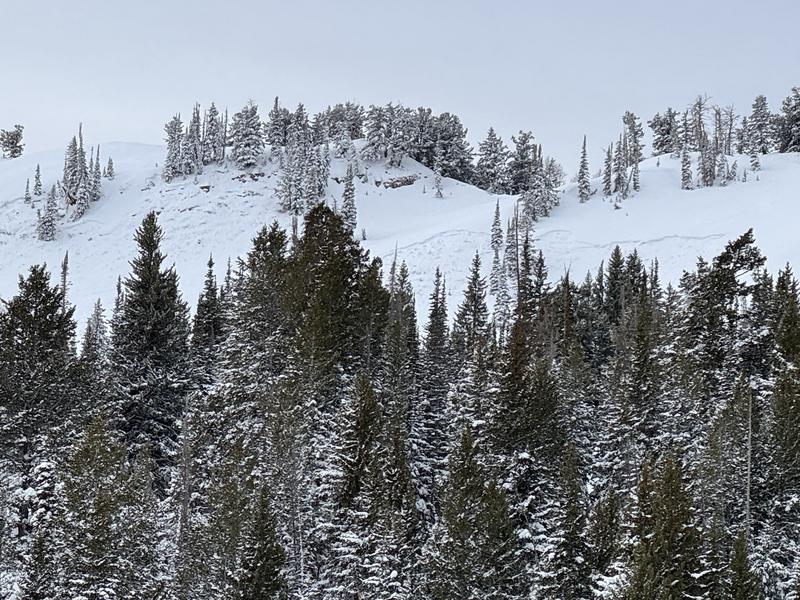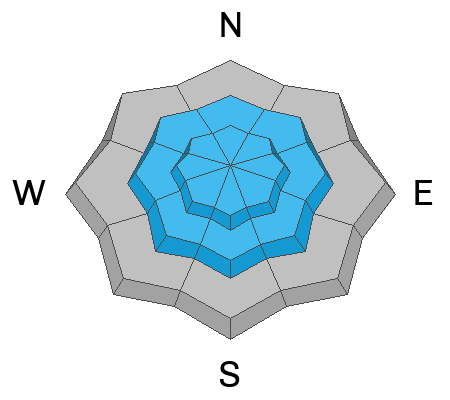Avalanche Warning
What: The avalanche danger for the warning area is HIGH today
Impacts: Recent heavy snow combined with strong wind is creating widespread areas of unstable snow. Both human-triggered and natural avalanches are likely.
What to do: Avoid all avalanche terrain. Stay off of and out from under slopes steeper than 30°. Carry and know how to use avalanche rescue equipment. Find safer riding conditions on slopes less than 30° with no overhead hazard
Warning Times: Tuesday December 31, 2024 - 6:00am to Wednesday January 1, 2025 - 6:00am
This morning, skies are finally clearing, and for the first time in several mornings, it’s not snowing. Temperatures have dropped significantly since yesterday with a temperature inversion in the mountains. Trailhead and base area temperatures are near or below zero, while ridgetop temperatures are nearing the low teens. Northwesterly winds have decreased overnight and are now 0-5 mph, with gusts up to 15 mph at the highest ridgelines. Final snow totals for the Provo area since the 26th were up to 26" of snow (with 3.02" of water).
Today will be cold and sunny in the mountains. Northwesterly winds should remain light, averaging 0-15 mph, while temperatures rise into the low 20s°F.
Looking Ahead: A gradual warming trend will develop this week. A weak storm is expected to graze northern Utah Wednesday into early Thursday, bringing 1-3 inches of snow to the northern mountains. Another, potentially stronger system could arrive this weekend, bringing 6-12 inches of snow to the northern and central mountains, depending on its track and intensity.
A three-part storm from December 27–29 triggered a widespread avalanche cycle across the Provo area, with strong winds, dense snow, and rain causing avalanches ranging from 10"-36" deep, 200'-2,500' wide, and up to 3,000' vertical. A rain crust formed below 8,000' after the storm. In addition to numerous avalanches reported by
UDOT Provo, 58 backcountry avalanches were reported to the Utah Avalanche Center from the Salt Lake, Provo, and Ogden area mountains, with 6 occurring in the Provo area. Many of these avalanches were remotely triggered or caused by distant failures, with slides reaching multiple feet deep and over a thousand feet wide.
Notable avalanche activity included slides in Timp, such as Pika Cirque (West and Center), Bomber Bowl, the entire Timp Cirque Head Wall, The Grunge and Side Apron, Wooley Hole, NE Chute, and N Elk Chute. In Cascade Cirque, most of the area experienced avalanches, while the Provo area saw slides in Provo Hole, East Face, No Money Down, Chablis (Upper and Mid), Slide Canyon (Mid Zone), Lost Creek (Gunner's Left), and Spring Falls Chute. Bunnells experienced avalanches in White Limbo, Middle, and Bimbo, and Big Springs saw significant activity in Big Bowls 1 through 6.
Below is the avalanche heat map highlighting recent activity across the Salt Lake, Provo, and Ogden area mountains. For detailed observations and reports, check out all avalanche observations
HERE.
